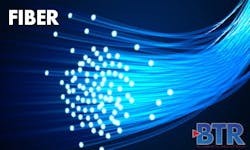A Different Approach to Fiber Deployment
By Craig Culwell, CommScope
Broadband subscribers clamor for more bandwidth and premium service quality, and network operators continue to look for faster and less expensive ways to deploy fiber-optic networks. Manual splicing of fiber-optic cables, custom-ordered pre-engineered fiber cables and extensive engineering all slow down deployments and add to the price tag. By using pre-connectorized fiber solutions, network operators can reduce deployment times and reduce costs to shorten time to market and increase subscriber satisfaction.
Building out fiber networks is a major undertaking. Network operators must work with state and local governments to obtain permission, and deployment typically includes gaining access to utility poles, or underground cable trenches and duct structures. The physical process of placing cable means handling large spools of cable and employing specialized technicians to splice that cable to fiber distribution hubs (FDHs), then to fiber terminals and customer service drops. In another application, operators deploy custom-engineered fiber cables spliced to FDHs. They have tethered locations for hand-off points, from which hardened connectorized service drop cables run to the customer's home or business.
There is an alternative to these scenarios that speeds distribution fiber deployment time and reduces overall costs. By using a fiber indexing approach, operators can eliminate the time spent waiting for cable manufacturing and simply daisy-chain indexing terminals. Each indexing terminal has a 12-fiber flat-cable bundle with a hardened multi-fiber-optical connector (HMFOC) on one end and the terminal on the other. These pre-connectorized indexing terminals with cables eliminate splicing in the distribution network beyond the FDH and consolidate feeder-fiber splicing efforts at the FDH. The distribution fiber cable is connectorized, as are the fiber service drop cables. Essentially, the fiber cable becomes something like an extension cord that can simply be plugged in to distribution terminals. This allows lower-level technicians to deploy the distribution fiber cable in the network, and higher-cost splicing technicians can focus on the splicing at the FDH. This also enables operators to reduce splicing headaches, speed the build of their networks, reduce deployment costs, recognize revenues sooner and stay ahead of competition.
Here's an example of how this approach saves time and money: Often times utility poles are in backyards in some aerial applications. Trying to run a pre-engineered, fiber cable across the pole line in consecutive order can take well over a week to access the properties, get the homeowners' permissions and deploy the cabling. Conversely, a fiber indexing solution can be placed pole-to-pole one section at a time as access is available, providing flexibility, ease, and speed of placement and turn-up.
The small size of the indexing cable solution further eases installation, utilizing simple P-clamps for pole attachments. The indexed pre-connectorized cable solution saves time and money with its smaller, lighter cable, and installers do not have to wrestle with a large spool of cable. Instead, they can carry the fiber terminal and cable coil in their hands, which makes it easier when going up a pole to hang the cabling. Additionally, by eliminating cable splicing in the distribution network, fiber indexing can take minutes, rather than hours. The indexing terminal solution also leverages the use of connectorized service drop cables to speed placement at time of service turn-up.
By using the indexing cable solution, network operators change from a star topology utilized in standard connectorized terminal applications to a daisy-chain topology for connecting service terminals. Indexing technology, using hardened service terminals with hardened multi-fiber connectors, combines the advantages of a daisy-chain topology with plug-and-play connectivity. With the indexed fiber approach, network operators can deploy fiber cable and terminals significantly faster and reduce the amount of fiber pulled in a star topology. Those are big advantages in the race to roll out new higher-speed ODN services to subscribers.
Craig Culwell is a solutions architect at CommScope, responsible for key service provider accounts in North America.
